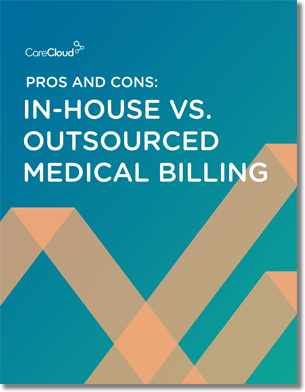The medical billing environment has become increasingly complex. Insurance companies and other payers have come up with progressively intricate ways to avoid paying claims.
These varied and complicated sets of rules can lead to increased denials, underpayments, and lost or ignored claims for medical billing companies who aren’t able to keep up with the constant rule changes.
Increased complexity means that medical billing and revenue cycle management (RCM) companies have to put even more work into getting their clients the money that they’re owed.
Instead of working harder for less money, billing and RCM companies need to work smarter to improve their gross margins.
Often these organizations depend too much on manual and paper-based processes, without the level of automation required for maximum productivity in the rapidly changing medical billing environment.
By not adopting emerging best-practice technology, billing and RCM companies are missing opportunities to improve their gross margin by optimizing staff productivity and increasing collections for clients.
Improve profits with these three simple tips:
Rethink Your Collections Cycle
Traditionally, accounts receivables have been tracked and managed based on 30-day increments. Claims are placed into different categories based on whether they’re 30-, 60- or 90-days-old, and actions are scheduled accordingly.
But in today’s increasingly complex billing environment, that 30/60/90 model is no longer applicable. Every payer operates on its own schedule and processes claims in different intervals.
For example, one payer may process claims in 14 days, while another takes as long as 40 days to get the payment to a client. If that’s the case, when the billing company follows up on an unpaid claim after 30 days, it will be too late for the first payer, but too early for the other.
The best way to get clients paid in a timely fashion is to act on claims based on each payer’s individual schedule. With a manual process, all the different dates and schedules are impossible to track, so companies must use a billing management system that allows for daily aging of receivables.
Those systems can automate collection incidents – for example, generating a letter, resubmitting a claim, or creating a collection incident and sending it to the collector’s queue – on outstanding claims to make sure the practice is taking the right action at the right time.
Go Digital
Another easy way to increase efficiency is to submit claims online whenever possible. That reduces the administrative burden on the billing company and helps practices get paid faster.
The power of the Internet is allowing a faster way to communicate with payers – and without all the paper work. Beyond online claim submissions, medical billing and RCM companies can use the web to:
- Check eligibility to avoid mistakes
- Track claim status to maximize collections
- Receive electronic remittance advice to ensure full payments
Collaborate More Effectively
When dealing with clients, payers, and their own internal processes, medical billing and RCM companies often deal with data and documents in a wide variety of formats – like physical delivery of paper forms, faxes, e-mails, and CDs and other types of electronic storage.
That leads to a highly inefficient office. Many companies resort to printing out copies of electronic documents so that everything can be stored in the same place and in the same format.
But the better option is converting all paper documents into electronic data. That’s why many billing and RCM companies use a document imaging solution, which can easily scan paper forms to extract data and convert it to an electronic format.
Streamlining the overly complicated medical billing and collection business will lead to benefits for the billing companies, their clients and the healthcare industry. Eliminating the waste is the first step toward increasing profits.
How has your medical billing or RCM company improved profitability? Share your tips below!



